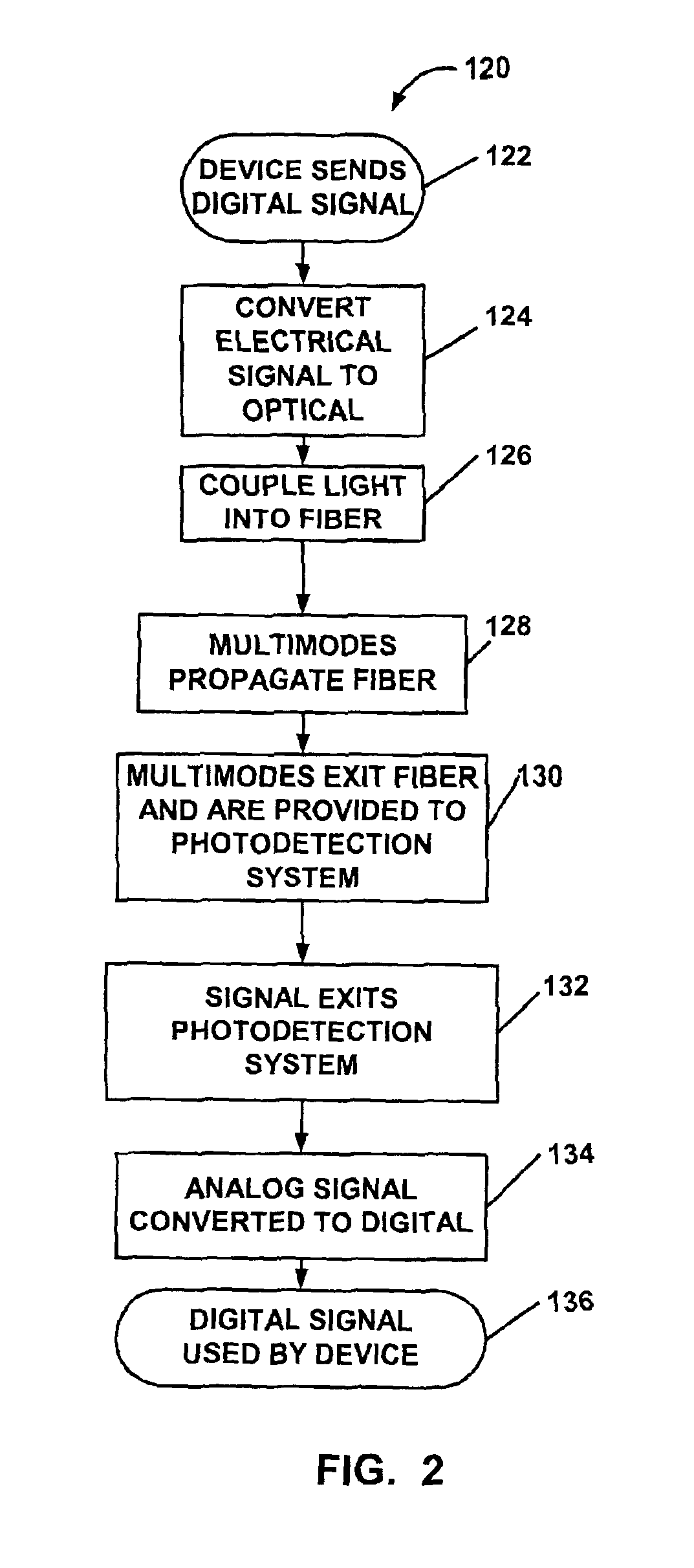Segmented photodetectors for detection and compensation of modal dispersion in optical waveguides
a technology of optical waveguides and segmented photodetectors, which is applied in the field of optical fiber systems, can solve the problems of reducing the maximum data transmission rate, limiting bandwidth-distance products of typical multimode fibers, and reducing the total transmission capacity of fibers, so as to improve the distribution of optical modes
- Summary
- Abstract
- Description
- Claims
- Application Information
AI Technical Summary
Benefits of technology
Problems solved by technology
Method used
Image
Examples
Embodiment Construction
Disclosed herein are methods and systems that involve segmented photodetectors for detection and compensation of modal dispersion in optical waveguides. To facilitate description of the inventive systems and methods, several example devices and methods that can be used to implement the segmented photodetectors are discussed with reference to the figures. Although the systems and methods are described in detail, it will be appreciated that the systems and methods are provided for purposes of illustration only and that various modifications are feasible without departing from the inventive concept. After the example systems have been described, an example of operation of a system will be provided to explain the manner in which the system can be used to provide the method for detection and compensation of modal dispersion in optical communications systems.
Referring now in more detail to the drawings, in which like numerals indicate corresponding parts throughout the several views, FIG....
PUM
 Login to View More
Login to View More Abstract
Description
Claims
Application Information
 Login to View More
Login to View More - R&D
- Intellectual Property
- Life Sciences
- Materials
- Tech Scout
- Unparalleled Data Quality
- Higher Quality Content
- 60% Fewer Hallucinations
Browse by: Latest US Patents, China's latest patents, Technical Efficacy Thesaurus, Application Domain, Technology Topic, Popular Technical Reports.
© 2025 PatSnap. All rights reserved.Legal|Privacy policy|Modern Slavery Act Transparency Statement|Sitemap|About US| Contact US: help@patsnap.com



